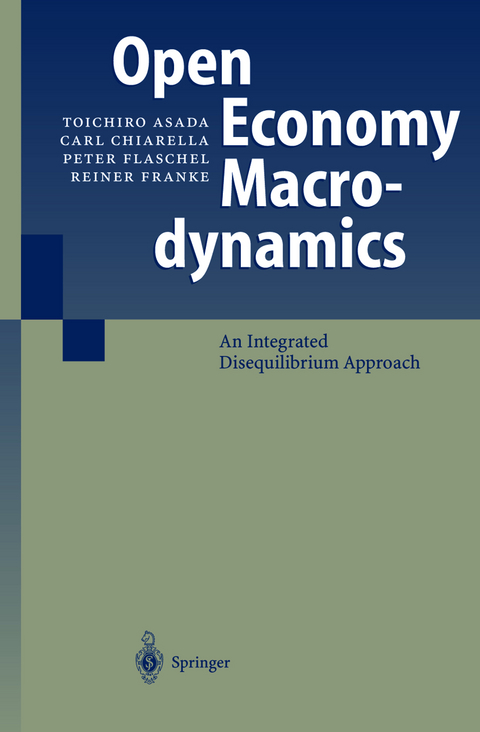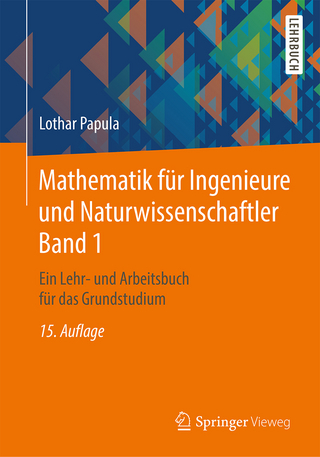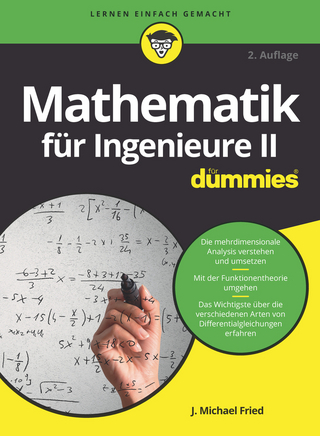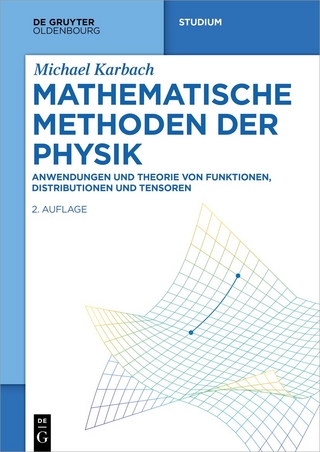
Open Economy Macrodynamics
Springer Berlin (Verlag)
978-3-540-40144-5 (ISBN)
1 The Closed Economy: The Frisch or Keynes Paradigm?.- 1.1 Introduction.- 1.2 Neoclassical macrodynamics: Supply-side inflation inertia and self-correcting unemployment dynamics.- 1.3 Keynesian macrodynamics: Textbook stagflation theory and beyond.- 1.3.1 Introduction.- 1.3.2 Medium-run IS-LM analysis?.- 1.3.3 IS-LM-PC analysis proper.- 1.3.4 Local stability properties.- 1.3.5 Global analysis I: Floors and ceilings?.- 1.3.6 Global analysis II: A kinked money wage Phillips curve.- 1.4 Conclusions and outlook.- 1.5 Reading list.- 1.6 Appendix: Keynes' notes on the trade cycle.- I Open Economy Macrodynamics in Historical Perspective.- 2 Classical Two-Country Dynamics: Pure Price Adjustments?.- 2.1 Trade under the gold standard.- 2.2 Trade, specie flows and purchasing power parity.- 2.3 A one-good monetary model of international commodity trade.- 2.4 The monetary adjustment process.- 2.5 Currency devaluation: Short-, medium- and long-run effects.- 2.6 The two-commodity extension.- 2.7 The pure monetary model: Basic and advanced formulations.- 2.8 Unemployment in the Classical trade model.- 2.9 Conclusions.- 2.10 Reading list.- 2.11 Notation.- 2.12 Appendix: The Classical version of the Keynesian income-expenditure model.- 3 Keynesian Two-Country Dynamics: Pure Quantity Adjustments.- 3.1 Bretton Woods, Phase I: The renewed evolution of international trade.- 3.2 The Keynesian approach to international trade.- 3.3 The two-country dynamic multiplier model.- 3.4 Currency devaluation in the multiplier model.- 3.5 Metzlerian inventory dynamics in the symmetric two-country case.- 3.6 Conclusions.- 3.7 Reading list.- 3.8 Notation.- 3.9 Appendix: The Keynesian version of the income-expenditure model.- 4 Output, Interest and Changing Exchange Rate Regimes.- 4.1 Bretton Woods Phase II: Trade and increasing capital mobility.- 4.2 The textbook Mundell-Fleming model.- 4.3 Monetary policy.- 4.4 Fiscal policy.- 4.5 Two-country Mundell-Fleming models: Basic aspects and extensions.- 4.6 Conclusions.- 4.7 Reading list.- 4.8 Notation.- 4.9 Appendix: The Mundell-Fleming-Tobin approach to small open economies.- 5 Exchange Rate Volatility.- 5.1 Capital mobility, flexible exchange rates and the role of expectations.- 5.2 Exchange rate dynamics in the IS-LM-PC model: Level-form analysis.- 5.2.1 The model and its stationary state.- 5.2.2 Comparative static analysis.- 5.2.3 Graphical representation and fundamental implications.- 5.3 Exchange rate dynamics in the IS-LM-PC model: Loglinear analysis.- 5.3.1 Loglinear representation and analysis.- 5.3.2 Myopic perfect foresight and learning.- 5.3.3 Imperfect capital mobility.- 5.4 Rational expectations IS-LM-PC dynamics.- 5.4.1 The case of the small open economy.- 5.4.2 A symmetric two-country analysis.- 5.4.3 A critique of the 'rational expectations' methodology.- 5.5 Exchange rate dynamics in the Dornbusch model: The most basic case.- 5.6 Conclusions.- 5.7 Reading list.- 5.8 Notation.- 5.9 Appendix: A Keynes-Wicksell reformulation of exchange rate dynamics.- II Keynes-Metzler-Goodwin Dynamics in Open Economies.- 6 KMG Model Building: The Baseline Case of a 'Closed' US-Economy.- 6.1 Introduction.- 6.2 Reformulating Keynesian AS-AD Macrodynamics.- 6.2.1 The 3D Rose type wage-price dynamics.- 6.2.2 The 2D Metzlerian quantity dynamics and capital stock growth.- 6.2.3 Putting things together: The KMG growth dynamics.- 6.2.4 Feedback-motivated stability analysis.- 6.3 Monetary Policy in KMG Growth Dynamics.- 6.3.1 Introducing monetary policy rules.- 6.3.2 The dynamics with estimated parameters.- 6.3.3 Kinked money wage Phillips Curves.- 6.3.4 The role of monetary policy rules reconsidered.- 6.4 Conclusions.- 6.5 Appendices.- 6.5.1 Appendix 1: The KMG dynamics in extensive form.- 6.5.2 Appendix 2: Detailed proof of theorem 6.1.- 7 Large Open KMG Economies: Germany within the EMU.- 7.1 Introduction.- 7.2 The model in extensive form.- 7.3 Intensive form and steady state analysis.- 7.4 Feedback motivated stability analysis.- 7.5 Monetary policy rules to fight inflation in the dominant country.- 7.6 Conclusions and Outlook.- 8 Small Open KMG Economies: Australia and the Murphy model.- 8.1 Introduction.- 8.2 The small open economy: The model.- 8.3 The core 8D dynamics: Assumptions and intensive form.- 8.4 The five feedback mechanisms of the model.- 8.5 Steady state and stability propositions.- 8.6 Rigorous 8D stability proof.- 8.7 Numerical simulations of the dynamics.- 8.7.1 Numerical simulations of the 8D dynamics.- 8.7.2 Adding sluggish trade balance adjustments.- 8.7.3 The kinked money-wage Phillips Curve reconsidered.- 8.7.4 Period-doubling routes to chaos.- 8.8 Conclusions.- 8.9 Appendix 1: The KWG simplification of the KMG approach.- 8.10 Appendix 2: Rigorous stability proof for the KWG case.- 9 Global Stability: Subsystem Approaches.- 9.1 Introduction.- 9.2 Dornbusch type exchange rate subdynamics.- 9.3 Metzlerian output-inventory interaction.- 9.4 The Tobin real-interest-rate inflation dynamics.- 9.5 The Rose real-wage feedback channel.- 9.6 Outlook: 3D and 4D extensions of the 2D cases.- 10 Two-Country Business Cycle Models: 'Euroland and the USA'.- 10.1 Introduction.- 10.2 Two interacting KWG economies.- 10.3 The core 10D KWG growth dynamics.- 10.4 Steady state and ?-stability analysis: Overview.- 10.5 Rigorous 10D stability proof.- 10.6 Numerical investigation of the KWG dynamics.- 10.7 Outlook: From 10D KWG to 14D KMG growth and beyond.- 10.8 Appendix to section 10.5.- Mathematical Appendix: Some useful theorems.- Notation (for part II).- References.
| Erscheint lt. Verlag | 17.6.2003 |
|---|---|
| Zusatzinfo | XVII, 540 p. |
| Verlagsort | Berlin |
| Sprache | englisch |
| Maße | 155 x 235 mm |
| Gewicht | 945 g |
| Themenwelt | Mathematik / Informatik ► Mathematik ► Angewandte Mathematik |
| Wirtschaft ► Volkswirtschaftslehre ► Finanzwissenschaft | |
| Wirtschaft ► Volkswirtschaftslehre ► Makroökonomie | |
| Schlagworte | Agents • Disequilibrium Models • Feedback Interaction • Growth Fluctuations • Inflation • Integrated Disequilibrium Macrodynamics • IS-LM • Keynes • Local and Global Stability • Makroökonomie • Open Economies • Stagflation |
| ISBN-10 | 3-540-40144-X / 354040144X |
| ISBN-13 | 978-3-540-40144-5 / 9783540401445 |
| Zustand | Neuware |
| Haben Sie eine Frage zum Produkt? |
aus dem Bereich


